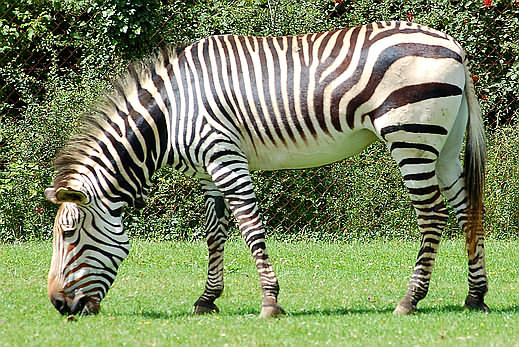Trivia question for Apr-20-2011
Carter liked learning about these guys and he is convinced that this species is so rare, no one will get these questioned answered. Lets see: These guys do not form lasting bonds; instead, temporary, constantly changing herds are formed.
These guys live in semi-arid grasslands where it feeds on grasses, legumes, and browse; it can survive up to five days without water. These guys were the first of its species to be discovered by the Europeans and was used by the Romans in circuses. However, it was largely forgotten about in the Western world for a thousand years.
This species is considered endangered. Its population was estimated to be 15,000 in the 1970s and by the early 21st century the population was lower than 3,500, a 75% decline. It is estimated that there are less than 2,500 of these guys living in the wild.
So here are Carter’s questions;
Tell us what is different about their stripes which make this species so easily identifiable? Also, these guys have the longest gestation period among Equid family members, tell us how long it is and also tell us how these guys got their name?
Good Luck 😉
Answer:
Congratulations to Silmi from India for being the first with the correct answer. The Zebra species we featured is the Grevy’s Zebra. The Grévy’s Zebra, also known as the Imperial Zebra, is the largest extant wild equid and one of three species of zebra, the other two being the plains zebra and the mountain zebra.
The Grévy’s zebra was first described by French naturalist Émile Oustalet in 1882. He named it after Jules Grévy, then president of France, who, in the 1880s, was given one by the government of Abyssinia. Gestation of the Grévy’s zebra normally lasts 390 days, with a single foal being born. This is the longest gestation period among Equid family members.
As for how to tell these guys apart from other zebra species, the easiest way is by looking at the stripes on their hind-quarters. Grévy’s zebras have vertical rather than horizontal stripes on their rumps, making them easily identifiable. Here is more on these rare zebras: Grévy’s Zebra
Thanks for playing along 😉


